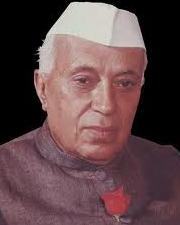Before going into the details of Industrialisation in India after independence, lets gather an idea about what is the actual meaning of Industrialisation in general terms. According to Wikipedia, Industrialisation or industrialization is the natural time frame of social and economic change that transforms a human group from an agrarian society into an industrial one. It is a part of a wider modernisation process, where social change and economic development are closely related with technological innovation, particularly with the development of large-scale energy and metallurgy production.
Industrialization in India after Independence
1 Aug 2013
By
Admin
Related Posts with thumbnails for bloggerblogger widgets
Continue reading..
India After Independence
26 Nov 2011
By
Admin
 When India became independent in August 1947, it faced a series of very great challenges. As a result of Partition, 8 million refugees had come into the country from what was now Pakistan. These people had to be found homes and jobs. Then there was the problem of the princely states, almost 500 of them, each ruled by a maharaja or a nawab, each of whom had to be persuaded to join the new nation. The problems of the refugees and of the princely states had to be addressed immediately. In the longer term, the new nation had to adopt a political system that would best serve the hopes and expectations of its population.
When India became independent in August 1947, it faced a series of very great challenges. As a result of Partition, 8 million refugees had come into the country from what was now Pakistan. These people had to be found homes and jobs. Then there was the problem of the princely states, almost 500 of them, each ruled by a maharaja or a nawab, each of whom had to be persuaded to join the new nation. The problems of the refugees and of the princely states had to be addressed immediately. In the longer term, the new nation had to adopt a political system that would best serve the hopes and expectations of its population.
India’s population in 1947 was large, almost 345 million. It was also divided. The citizens of this vast land spoke many different languages, wore many different kinds of dress, ate different kinds of food, practised different professions and belonged to different religion and castes. To the problem of unity was added the problem of development. At Independence, the vast majority of Indians lived in the villages. Farmers and peasants depended on the monsoon for their survival. So did the non-farm sector of the rural economy, for if the crops failed, barbers, carpenters, weavers and other service groups would not get paid for their services either. In the cities, factory workers lived in crowded slums with little access to education or health care. Clearly, the new nation had to lift its masses out of poverty by increasing the productivity of agriculture and by promoting new, job-creating industries.
Related Posts with thumbnails for bloggerblogger widgets
Continue reading..




